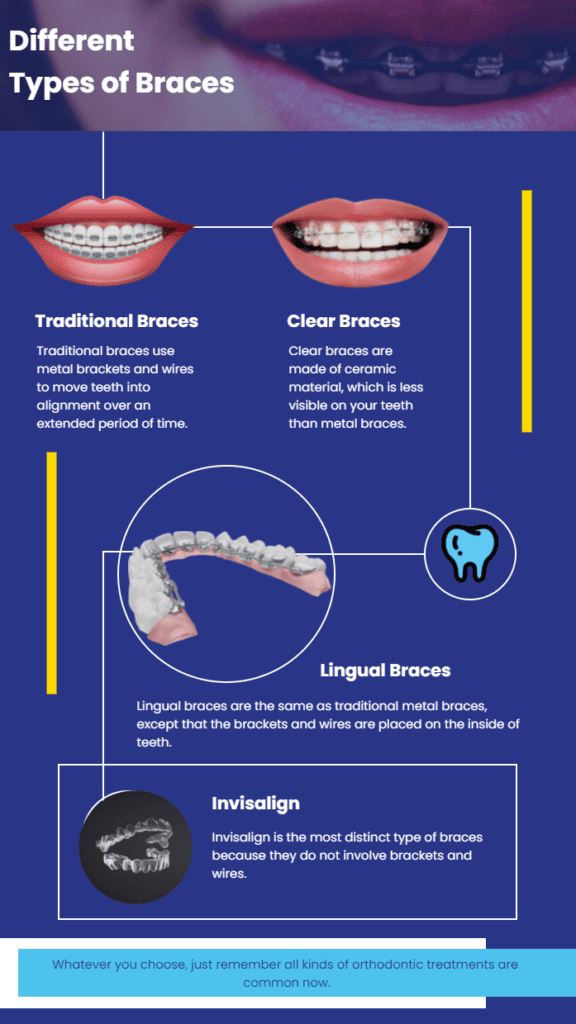Comprehensive Guide to Orthodontics Procedures for Dealing With Dental Misalignments
In the world of orthodontics, the journey to accomplishing a flawlessly straightened smile involves a myriad of treatments customized to fix oral imbalances. From traditional dental braces to unnoticeable aligners and even medical alternatives, the area of orthodontics provides a variety of services to resolve differing levels of oral abnormalities. Recognizing the intricacies of each procedure, including their systems, benefits, and prospective disadvantages, is critical in making informed decisions about one's orthodontic therapy. As we navigate through the extensive guide to orthodontic procedures for fixing dental misalignments, the detailed information of each technique will unfold, shedding light on the path toward a functional and harmonious dental alignment.
Orthodontic Procedures Introduction

Regular modifications and surveillance are critical parts of orthodontic therapy to ensure progress is on track and to make any type of needed alterations along the method. By going through orthodontic procedures, individuals can not just attain a straighter grin however additionally boost their total dental health and feature.
Traditional Braces: Exactly How They Work
When thinking about orthodontic treatments for oral imbalances, standard braces stick out as a time-tested approach for fixing teeth positioning. Standard braces contain brackets, cables, and bands that collaborate to use constant pressure on the teeth, progressively relocating them into the wanted alignment. The brackets are affixed to the teeth using an unique adhesive, and the cables are threaded with the brackets. By changing the tension of the cords, orthodontists can control the instructions and force put on each tooth, directing them right into proper alignment in time.
As pressure is used to the teeth with the braces, the bone surrounding the teeth is reshaped to support the new tooth settings. People will need regular adjustments at the orthodontist's office to guarantee the braces continue to apply the appropriate stress for effective teeth activity.
Unnoticeable Aligners: Cons and pros
Undetectable aligners supply a convenient and discreet choice to traditional braces for correcting oral misalignments. These clear, customized trays are essentially invisible when worn, making them an enticing alternative for individuals seeking a much more visually pleasing orthodontic treatment. Among the key benefits of unnoticeable aligners is their removability, permitting much easier upkeep of dental hygiene contrasted to typical braces. Clients can remove the aligners prior to consuming or brushing their teeth, reducing the risk of food obtaining embeded the appliance and streamlining the cleaning procedure.

Surgical Orthodontic Options
Surgical treatments in orthodontics present feasible choices for addressing intricate oral misalignments that might not be properly dealt with via conventional orthodontic treatments. While unnoticeable aligners and conventional dental braces can fix many orthodontic concerns, particular cases need medical intervention to achieve ideal results. Surgical orthodontic choices are commonly advised for serious malocclusions, substantial jaw disparities, and instances where the underlying bone structure requires modification to attain correct positioning.
One common surgical orthodontic procedure is orthognathic surgical procedure, which entails repositioning the jaws to fix practical problems such as trouble eating or speaking. This surgery is often performed in partnership with an orthodontist that assists align the teeth prior to and after the treatment. Surgical orthodontics might additionally involve treatments to reveal impacted teeth, get rid of excess gum cells, or reshape the jawbone to produce a much more harmonious facial account.
Prior to considering surgical orthodontic choices, people undertake an extensive analysis to figure out the necessity and potential benefits of such treatments. orthodontics. While surgery may appear challenging, it can significantly improve both the function and aesthetic appeals of the smile in situations where traditional orthodontic therapies fail
Retainers and Post-Treatment Treatment

Post-treatment care involves complying with the orthodontist's guidelines diligently. This may include proper dental hygiene practices, attending follow-up appointments, and wearing the retainers as prescribed. Failure to abide with post-treatment care directions can lead to relapse, where the teeth slowly relocate back in the direction of their initial placements. Consistent retainer wear, great oral hygiene, and normal dental exams are essential for preserving the results achieved through orthodontic surgical treatment and guaranteeing the long-term stability of the remedied oral placement.
Final Thought
In verdict, orthodontic treatments provide numerous alternatives for correcting oral imbalances. Surgical orthodontic options are available for Read Full Article extra severe misalignments. Generally, orthodontic procedures can efficiently boost oral health and wellness and visual appearance.
As we Get More Information navigate via the extensive guide to orthodontic treatments for remedying oral misalignments, the intricate information of each method will certainly unravel, losing light on the path toward a harmonious and practical oral placement. - cumming orthodontics
One of the most usual orthodontic therapies is the use of braces, which are composed of metal brackets and wires that apply gentle stress to slowly shift teeth into the desired placement.When considering orthodontic therapies for oral misalignments, traditional dental braces stand out as a tried and true technique for dealing with teeth placing. In addition, invisible aligners may not be ideal for complicated orthodontic issues that need even more substantial teeth activity, as they are generally suggested for light to modest situations. Retainers are customized orthodontic devices made to hold teeth in their corrected placements after the conclusion of orthodontic therapy.